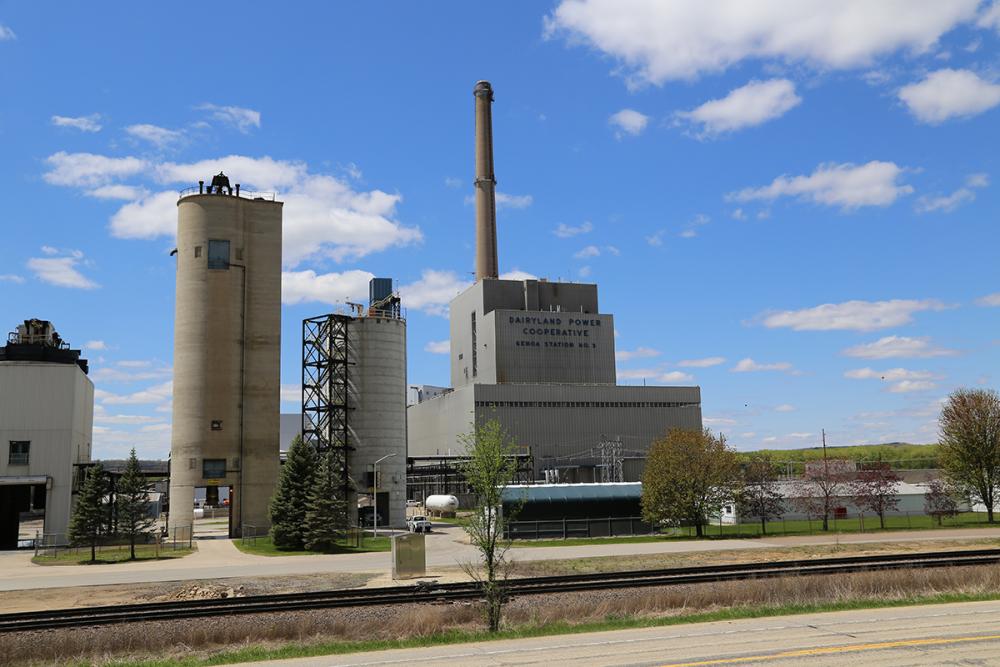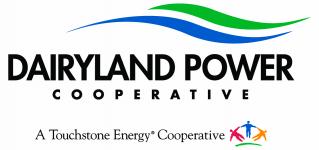While these are not all of the retired sites from Dairyland's history, below are cards with more information about some of the recent retirements.
Alma Station Units 1-5

Alma Station Units
The Alma Station was located on the bank of the Mississippi River in Alma, Wis. Its first two units (20 MW each) came online toward the end of 1947 - less than two years after construction first began at the site. Unit 3 (20 MW) was was placed in operation in Dec. 1950. Unit 4 went online in 1957 (55 MW), pushing the Alma Station output in 1957 to 115,000 kilowatts (115 MW) of Dairyland's total generating capacity of 210,000 kW. Unit 5 was the largest at the Alma Station at 80 MW, built in 1960.
The first three units of the Alma Station ceased operations on Dec. 31, 2011. Dairyland then retired Alma Station units #4 and #5 in fall 2014. Decommissioning began in 2017 with the final piece - demolition of the emissions stack - completed in October 2018.
A time-lapse video was created during the demolition of the Alma Station (June - December 2017).
A compilation video of the Alma Stack demolition
40
Total megawatts of Alma Station Units 1 & 2, brought online in 1947
20
Alma Station Unit 3 goes online in 1950 (20 MW)
5
Units 1-5 combined for 195 MW and were built between 1947-60
Genoa Station #3

G-3
Genoa Station #3 (G-3), located on the bank of the Mississippi River about 20 miles south of Dairyland Power Cooperative's La Crosse, Wis., headquarters, was completed in 1969 at a cost of $56 million. It was brought online in June 1969. Commercial operation began on July 16, 1969.
G-3 was the third generating facility to be built in Genoa, Wis. Genoa Station #1 was a fuel-oil generation plant. Genoa Station #2 was the La Crosse Boiling Water Reactor and Wisconsin's first nuclear facility that operated from 1967-87. G-1 and G-2 have been dismantled
G-3 was a super efficient, single unit station with a generating capacity of 345 megawatts (MW).
In January 2020, Dairyland’s Board of Directors voted to retire G-3 in 2021. Click here to read the press release of the announcement.
G-3 provided Dairyland members with safe, reliable and affordable electricity from July 16, 1969 until April 11, 2021. It was officially retired on June 1, 2021.
56
Completed in 1969 for $56 million
52
G-3 powered the region with reliable electricity for nearly 52 years
379
Built as a 379-MW capacity unit, cleaner burning coal reduced it to 345 MW
LACBWR
La Crosse Boiling Water Reactor
The La Crosse Boiling Water Reactor (LACBWR) was built in 1967 as part of a joint project with the federal Atomic Energy Commission to demonstrate the peacetime use of nuclear power; Dairyland built the turbine, generator and plant auxiliary systems. In 1973, the reactor and fuel were transferred to Dairyland. At the time, both parties believed spent nuclear fuel would be reprocessed and would not become a long-term storage problem. Reprocessing was terminated through a presidential executive order by Jimmy Carter in April 1977.
LACBWR was shut down and placed in SAFSTOR in April 1987. In September 2012, after several years of preparation, LACBWR’s used fuel was placed into a dry cask storage system on the south end of Dairyland’s Genoa Site. The fuel is monitored around the clock at the Independent Spent Fuel Storage Installation site (ISFSI), in accordance with NRC regulations.
50
LACBWR was a 50 MW nuclear power plant
1
LACBWR was promoted as Wisconsin's first atomic energy power plant
100
The reactor pressure vessel was 100 tons and manufactured by Allis-Chalmers
